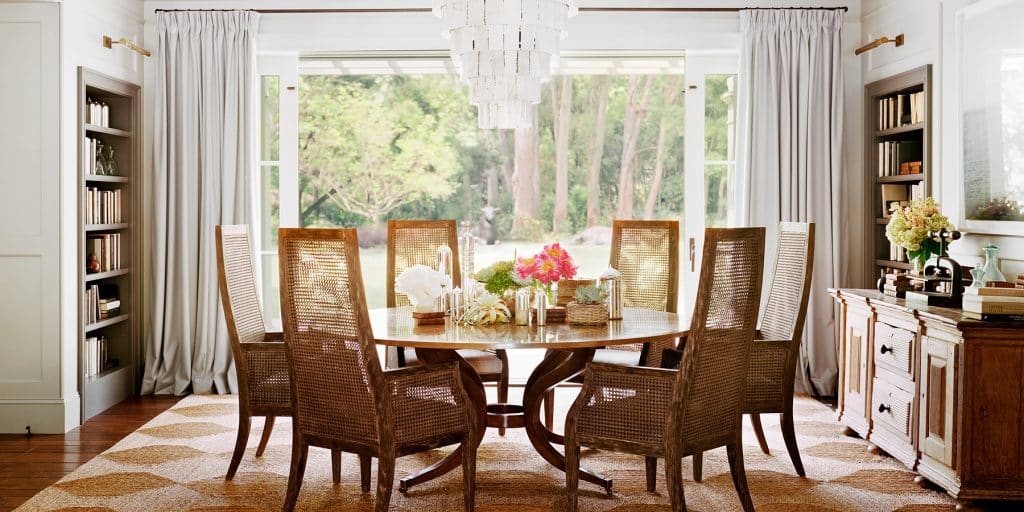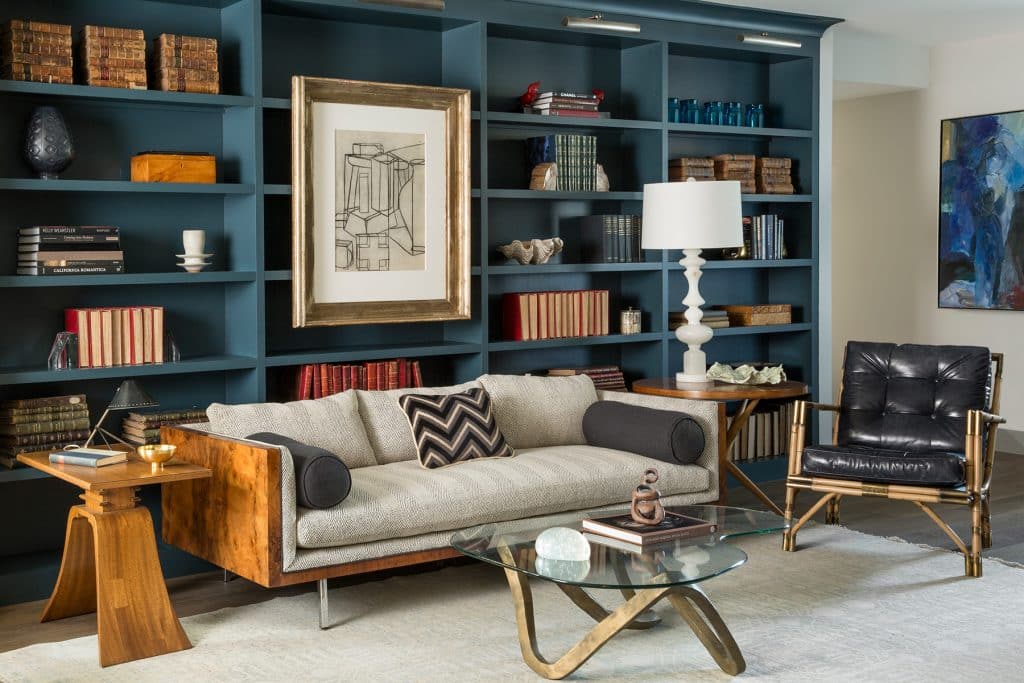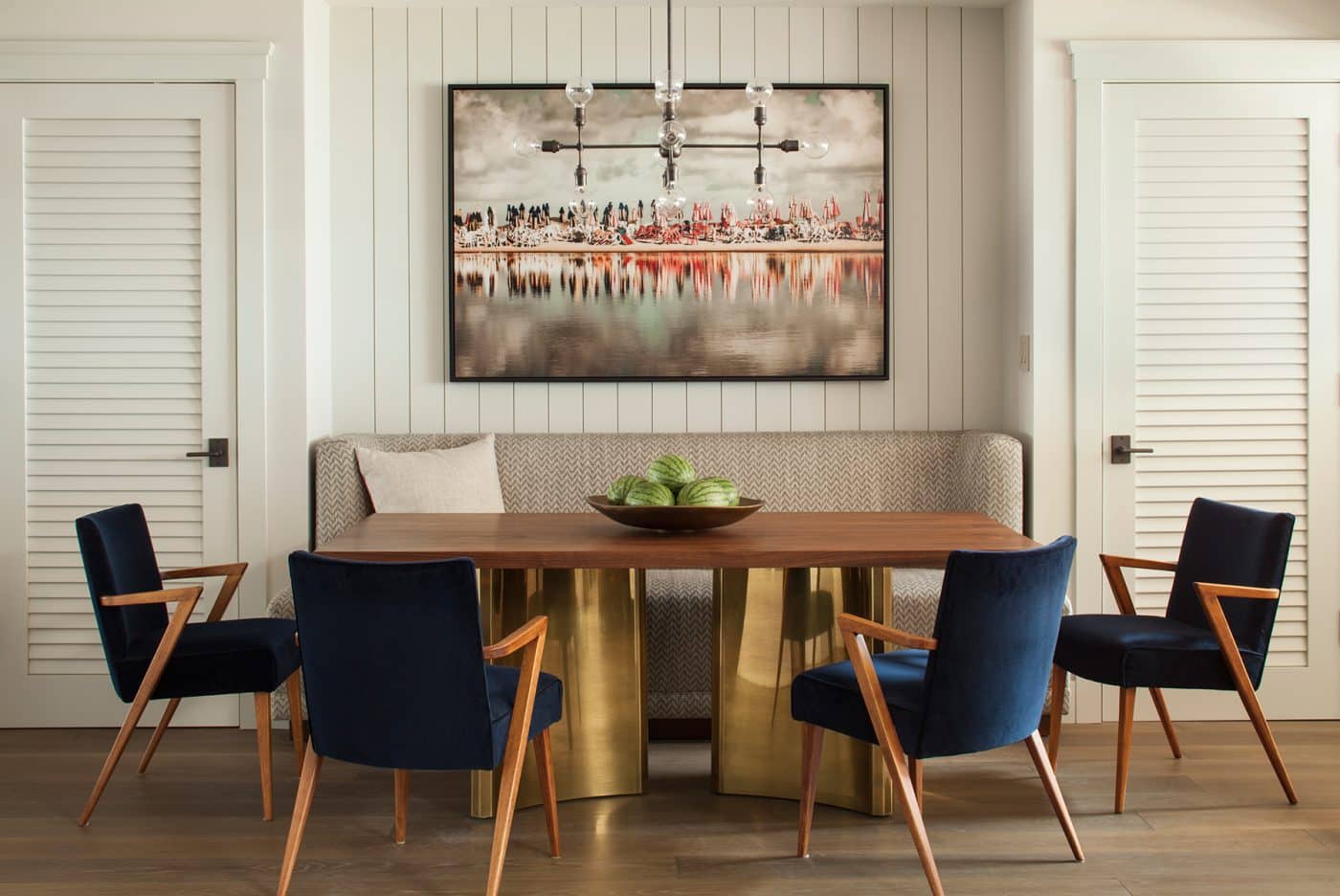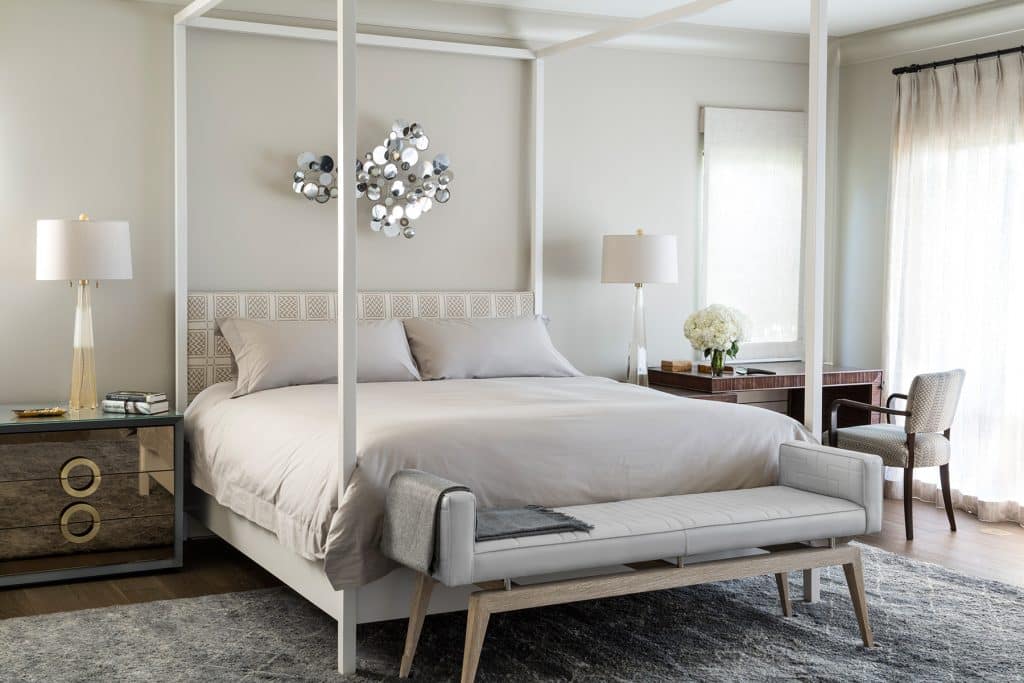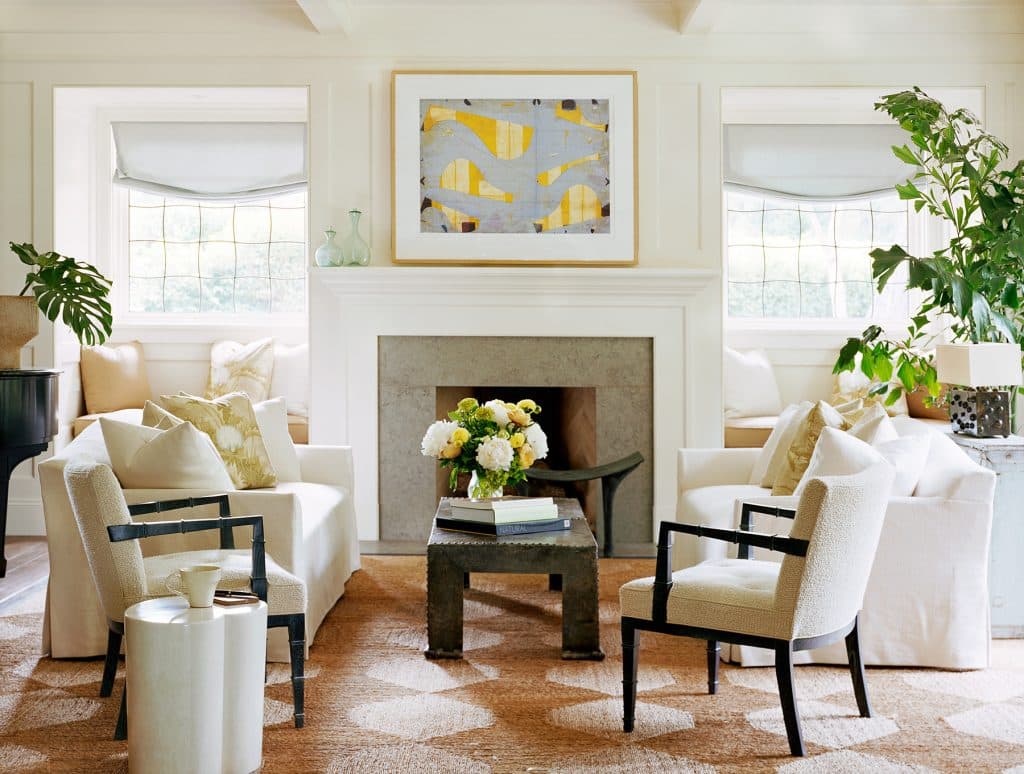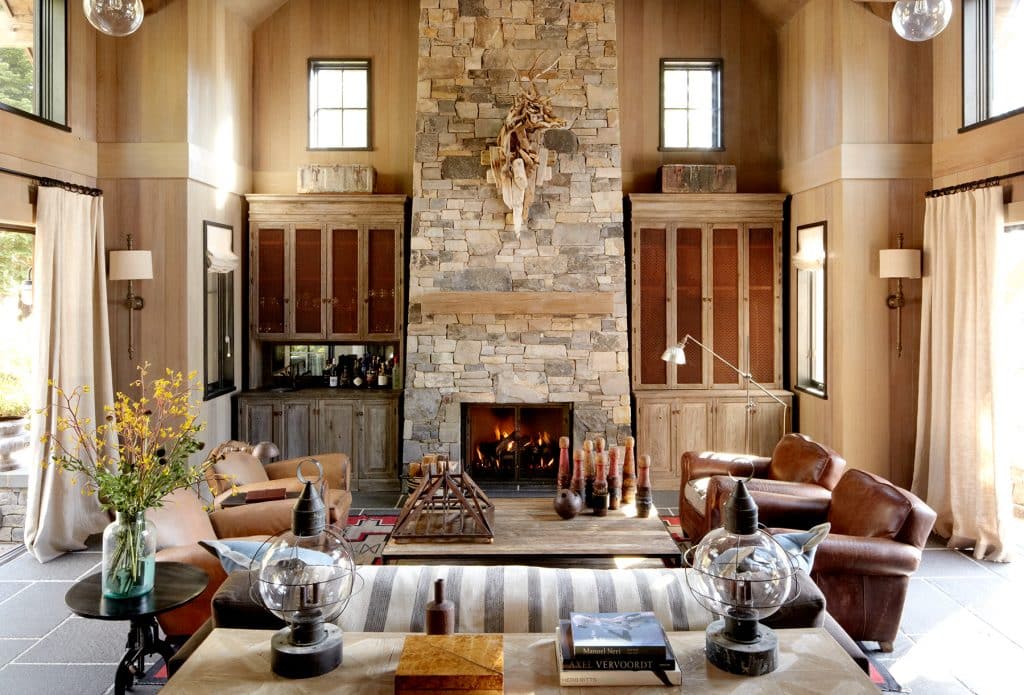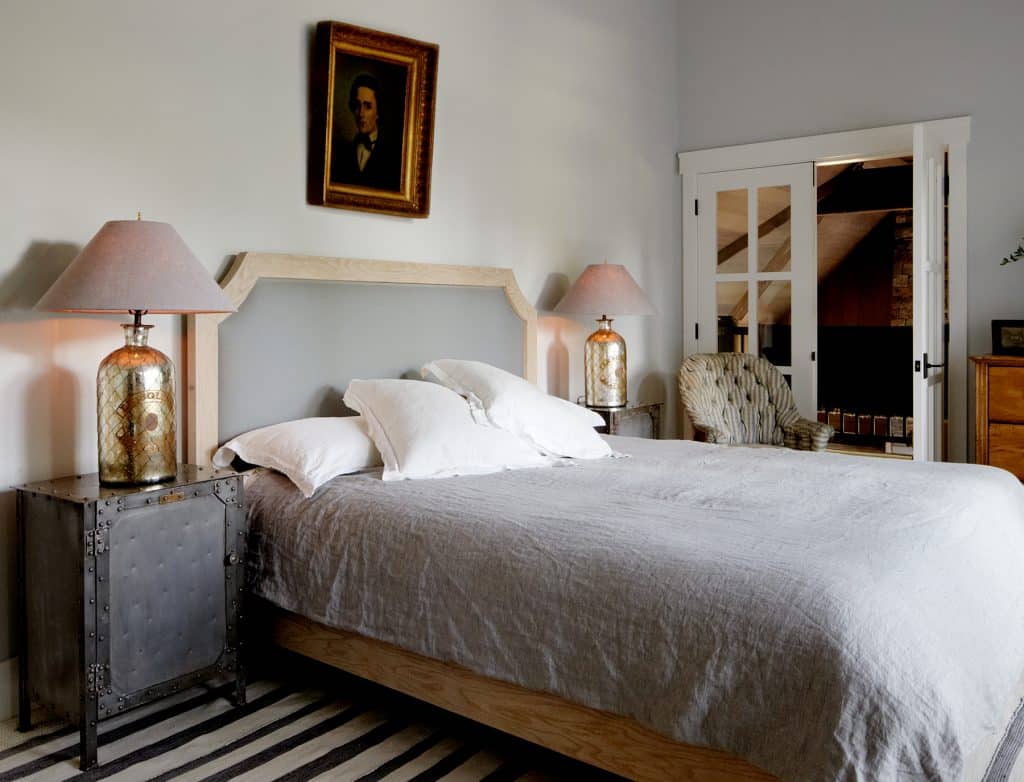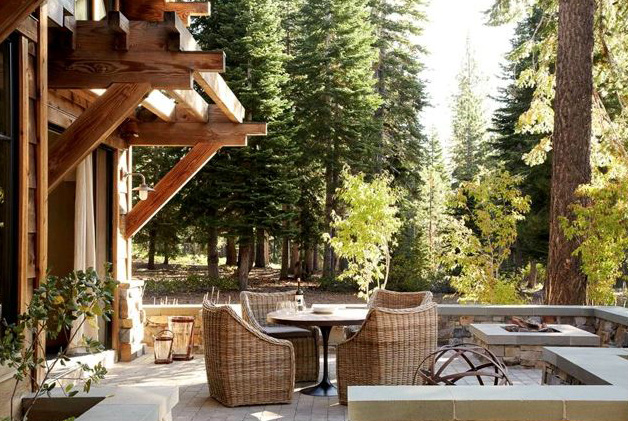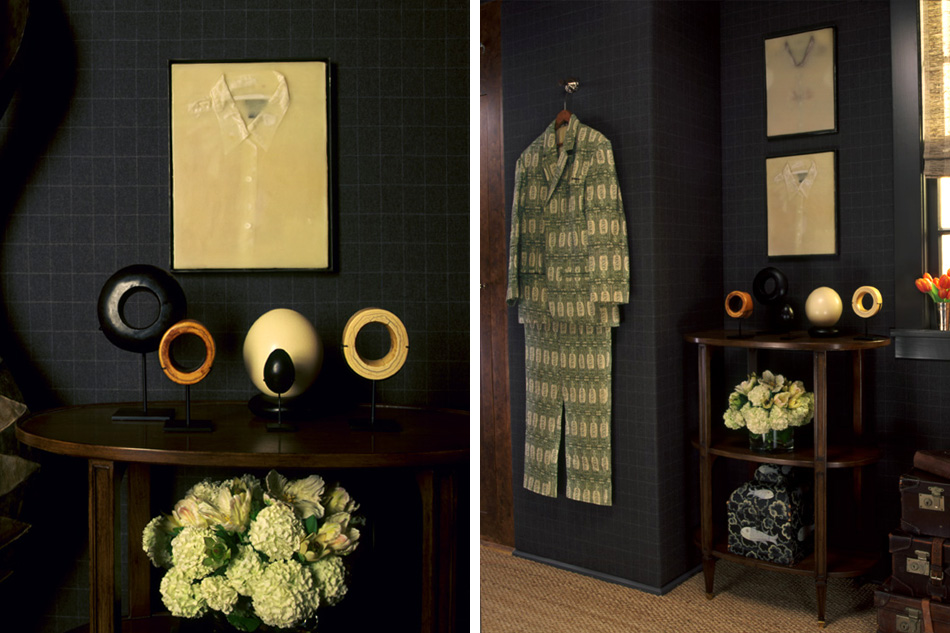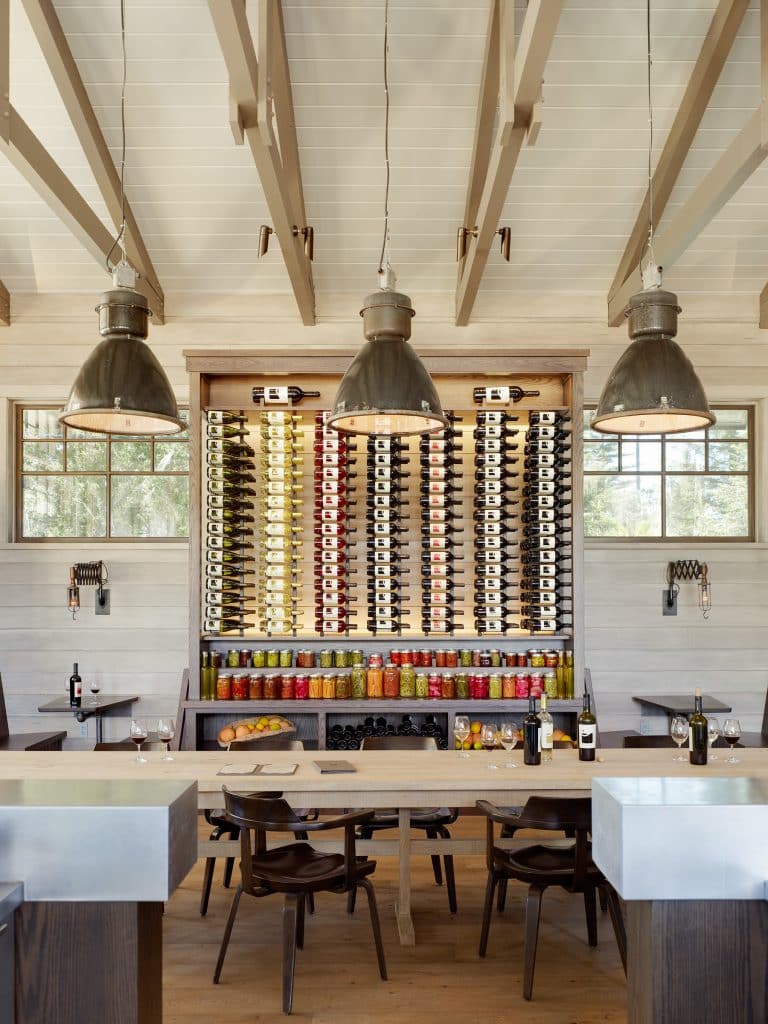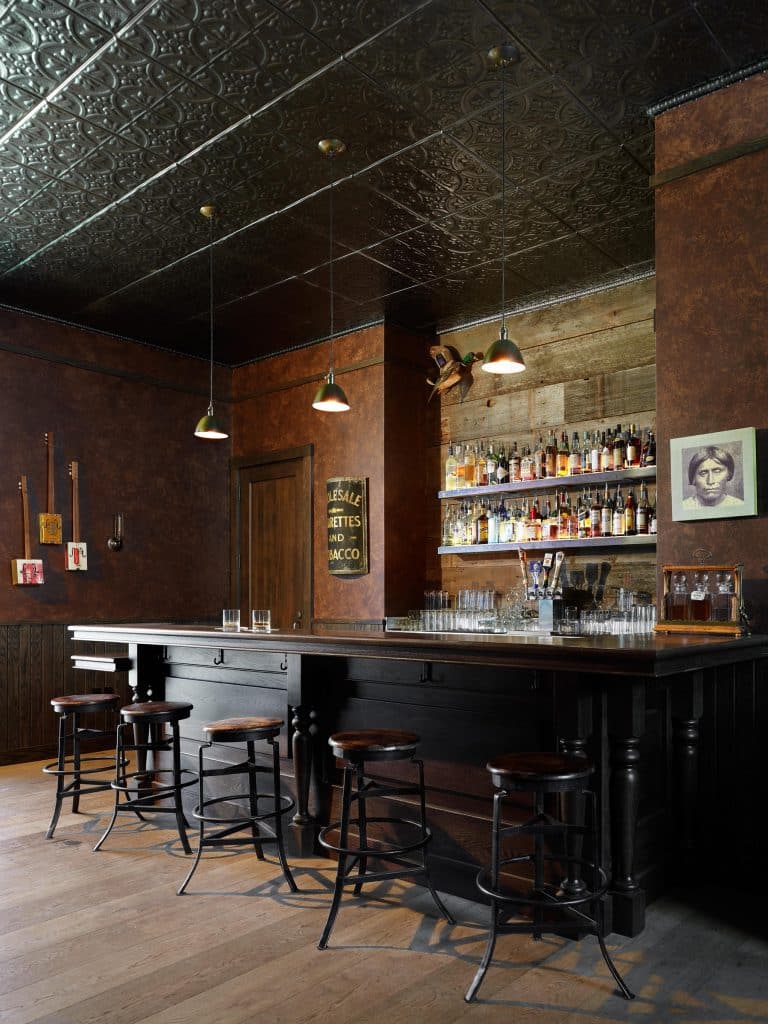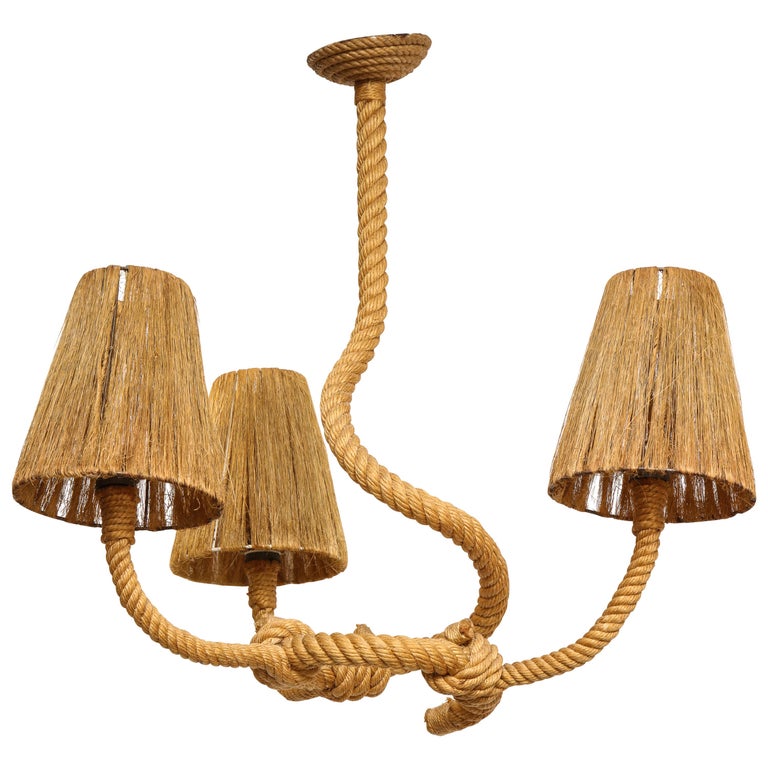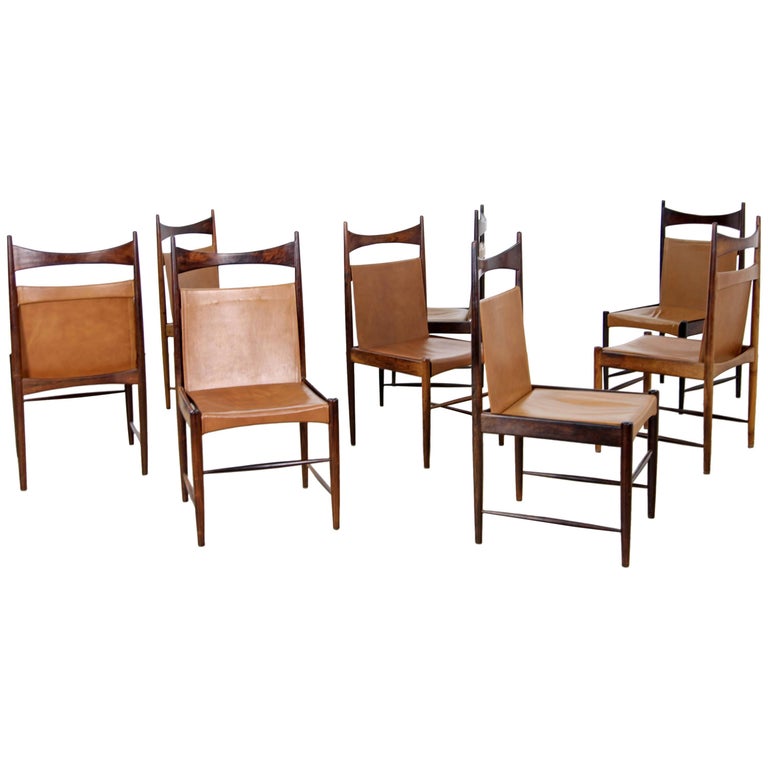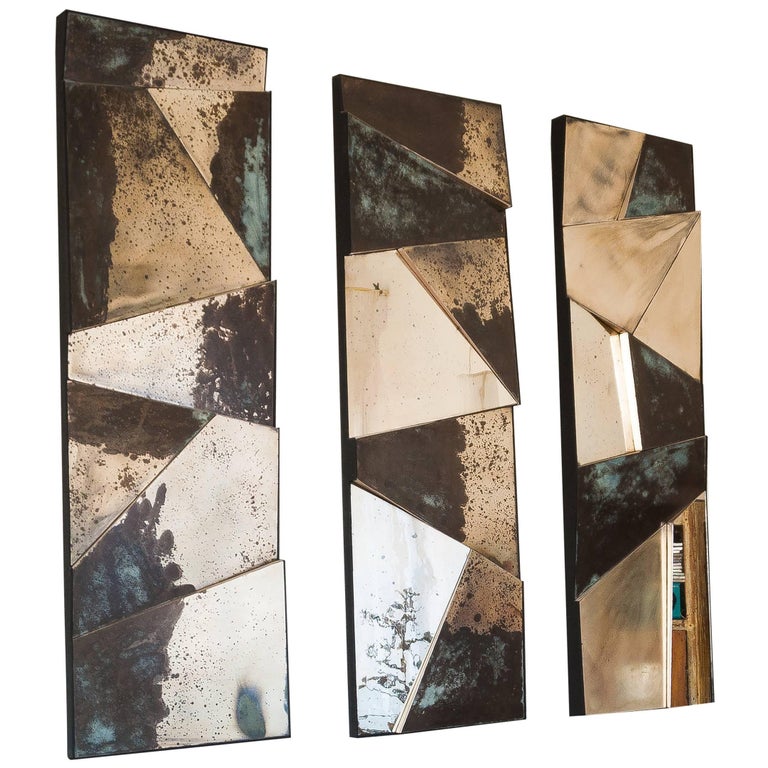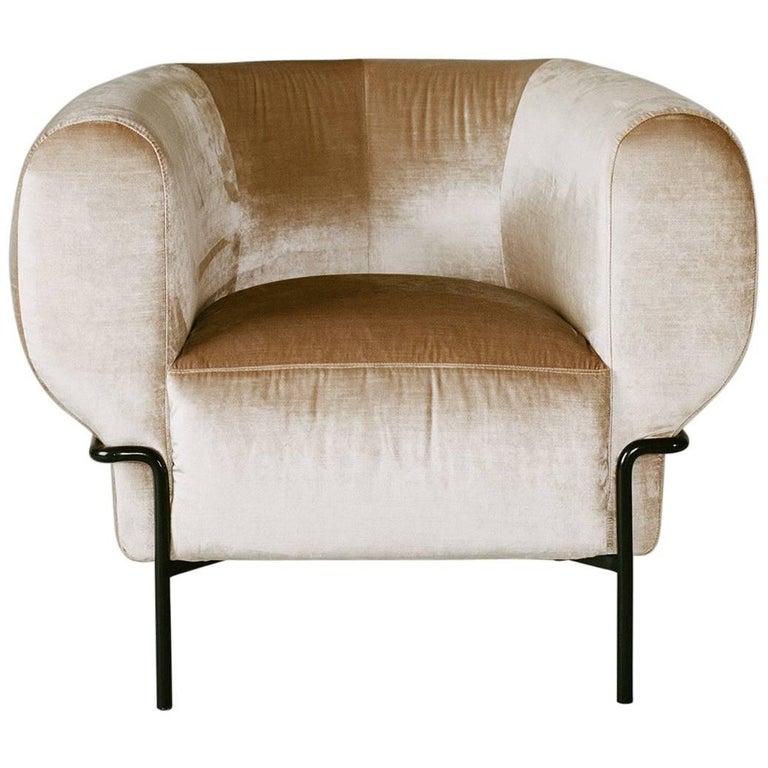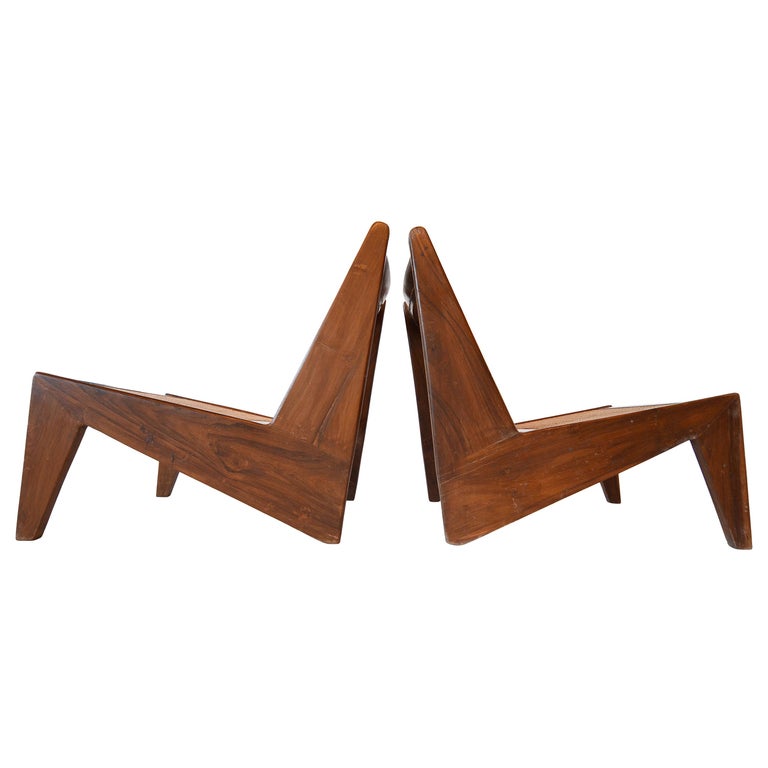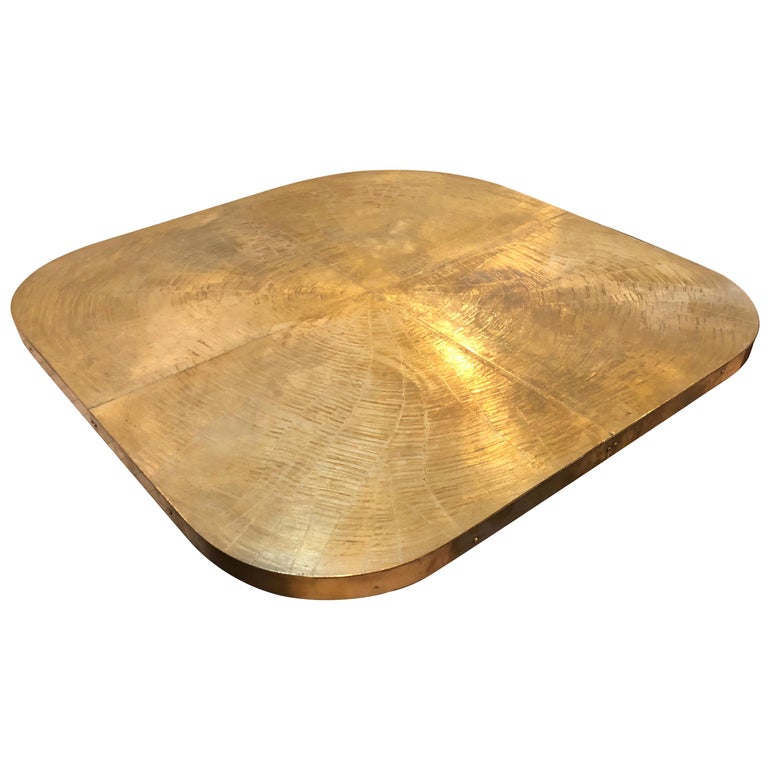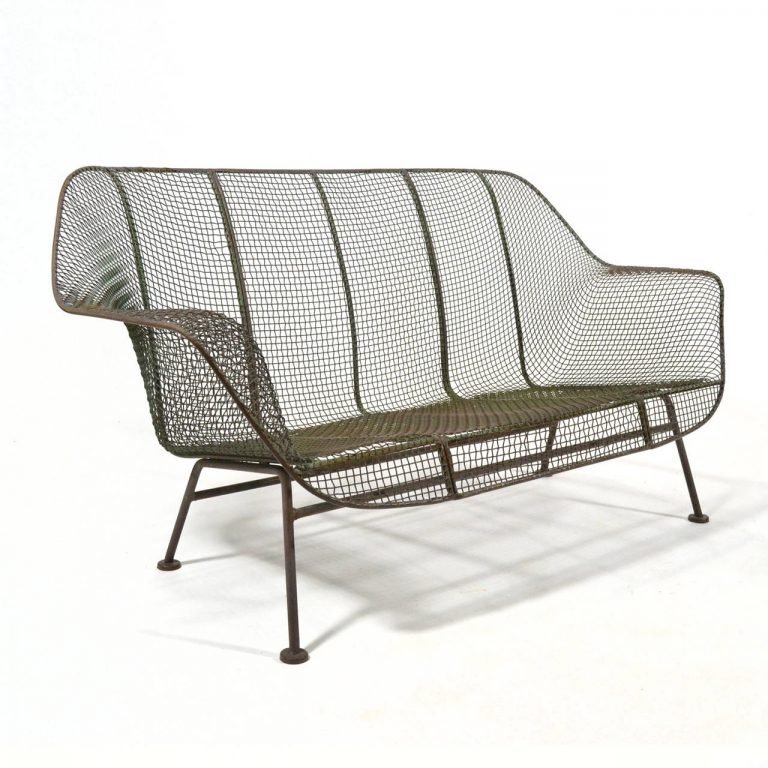
February 24, 2019San Francisco–based designer Will Wick says travel and being raised by creative women have had the greatest influence on his interior designs (portrait by Aubrie Pick). Top: For the decor of a dining room in Woodside, California, Wick played off the pocket doors that open to an expansive patio and backyard, outfitting the space with a Kneedler Fauchère table and an antique French sideboard (photo by David Tsay).
Will Wick got an early education in aesthetics. “My mom is incredibly artistic and has an amazing eye for antiques and immersive environments,” he says. “My stepmom was the former West Coast editor of Vogue, and my dad’s house in San Francisco was gorgeous and tailored.” Shuttling among his parents’ homes in Connecticut, San Francisco and Colorado gave him an appreciation for both the rustic and the refined.
After receiving a degree in environmental design, Wick thought architecture would be his calling, but an encounter with boutique hotel legend Bill Kimpton changed his mind. Hearing the passion in Wick’s voice when talking about design, the soft-spoken hotelier urged him to pursue interiors. “It was at that moment that it all came together,” Wick recalls. “I love the interiors of homes — not just the way they look but the way they make you feel.” Wick dived into the field with energy and curiosity, working for a San Francisco designer and soaking up all the knowledge he could. After the dot-com bust in 2000, he started his own company because, he says, “it made more sense to do my own thing rather than work for someone else.”
After a few under-the-radar projects, Wick made a splash with his debut at the San Francisco Decorator Showcase, in 2004. “They gave me this very small space, basically a closet,” he recalls. “I created an English dandy’s dressing room, with the walls upholstered in men’s flannel suiting fabric and the trim and crown molding painted a crisp off-white, like a starched collar. Even the burled-walnut cabinetry had the look of a well-polished pair of Italian wingtips.”

Wick — who, with his wife, Jen Kelly, and their four children, called this Sausalito pad home until recently — took inspiration from its woodsy ’70s vibe to create a laid-back luxe interior worthy of a rock star. He and Kelly designed the shearling and silk-velvet sofas. The parchment side tables are Karl Springer, and the Sheriff lounge chair is by Sérgio Rodrigues. Photo by Patrick Argast
It was a big moment for Wick and his young firm. And it would set the tone for all his following work. “I have huge respect for history and classic design, but I always want to create a juxtaposition, something unexpected,” he says. “So I take my clients’ past personal influences and create a new and unique story with them.”

The three-bedroom Sausalito house was built in the early ’70s by an Italian shipbuilder using redwood, terracotta tiles and boat fittings. In the home’s landing, Wick brought in modern touches with a collection of works by Berlin artist Nick Flatt and others. Photo by Patrick Argast
Wick’s projects, which range from a classic mountain retreat in Lake Tahoe to a funky, retro Sausalito waterside home, display a mix of refinement and daring, curiosity and comfort. “I want to wow, but wow in a subtle way,” he says. “I want to create spaces where you walk in and feel more than just it’s a pretty space. You should feel transformed while you are in it.”
For husband-and-wife clients in Woodside on the San Francisco Peninsula, Wick used texture and patina to bring warmth to their newly constructed home, while also reflecting their indoor-outdoor lifestyle. His goal was for the finished space to seem authentic and lived-in, not, he says, like a “freshly decorated fancy house.” To achieve this, he channeled a country farmhouse with European élan and a sprinkling of modern touches. Instead of a striking palette or showy art, the rooms make a statement with their clever mix of shapes, natural textures and furniture that is refined enough for guests but also comfortable enough to lounge on for hours. Natural elements abound, including abaca rugs, an agate chandelier, wicker chairs and zinc counters.
For a young married couple in Oakland, Wick had to undo the damage inflicted on a light-filled 1920s California cottage by a slew of renovations in the 1970s, ’80s and ’90s. When he first saw the house, Wick considered walking away. “It was early on, and I thought, ‘I don’t know if I am skilled enough to do this.’ ” Luckily for his clients, he persevered and with architect Luke Wade moved the space in a contemporary yet classic direction, blending masculine modernity (which the husband wanted) with feminine whimsy (the wife’s request). “We asked ourselves, ‘How would we live in this house?’ ” says Wick. The renovations entailed repositioning most of the walls and doors and stripping terracotta floor tiles until the original essence of the home emerged from the rubble.
The home is now a fresh take on Shaker style. “It’s not heavy-handed — more a lighter, brighter version of Shaker that speaks to both him and her,” the designer explains. For the furnishings, Wick created several custom pieces, such as the tailored sofas in the living room. He also sprinkled in vintage finds, like a Milo Baughman burl-wood sofa in the study and a gleaming Curtis Jeré wall sculpture in the master bedroom. “It’s important for homes to feel special,” says Wick. “I want to make sure there are pieces here and there that are unique.”

At the Woodside home, Wick created a round deck among a circle of redwood trees for a peaceful spot to read or enjoy cocktails. Photo by David Tsay
That goes for his own homes too. When Wick and his wife, Jen Kelly, who is the vice president of creative development at Restoration Hardware, first saw the house that until recently was their home, in Sausalito, just over the Golden Gate Bridge, it resembled, he says, “a seventies Italian cruise ship.” (A shipbuilder had constructed it during the disco era with a plethora of redwood, terracotta tiles and boat fittings.) Instead of erasing the original vibe, the couple embraced it. “We respect architectural tradition, so we went for it,” Wick says. In the main living space, which boasts spectacular views of the bay, they had custom fur sofas built as an homage to the parties once thrown by the previous owner. To these, Wick added a few Karl Springer parchment side tables, a Sérgio Rodrigues chair and petrified-tree-stump side tables.
Each piece he selects and each project Wick chooses reflect his desire to project an original voice. “For me, it’s about trusting my inspiration, my own path,” he says. “I am not interested in designing like anyone else.”
